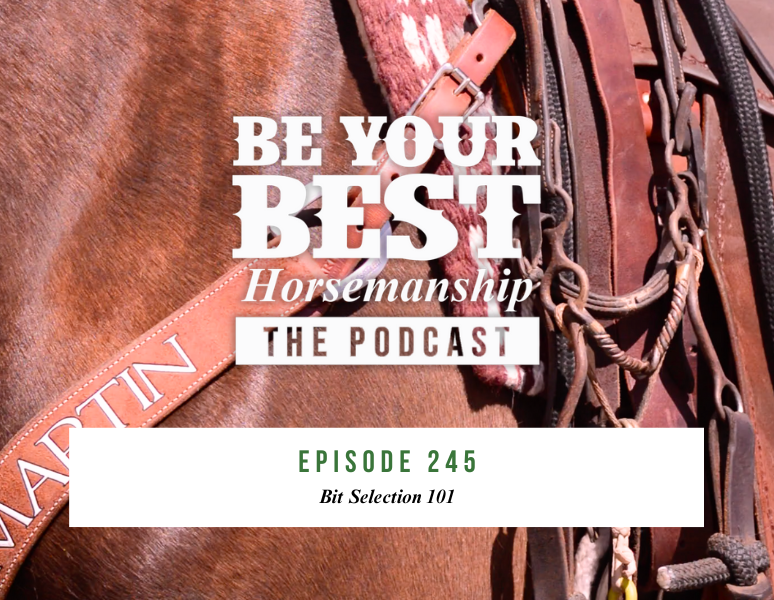Ep 245: Bit Selection 101
Today, I want to touch on a couple of topics that always come up at our clinics, whether it’s a public event or a private one. These topics are essential because they shape our communication and signals with our horses, specifically when it comes to bridles, saddles, and equipment.
First off, let’s talk about bridles. You’ve heard me say this before, but it’s worth repeating: the bridle is just a tool to send a signal. That’s all it is. There’s nothing inherently magical about any bridle. What’s important is how we use that signal to communicate with our horses.
Our bodies work in such a way that when our minds send a message, our hands are often the first to react. This is why it’s such a challenge to stay off the bridle reins. I remember a time in my career when I was terrible at this—I’d ride around with contact or even pressure in the horse’s mouth more often than not. Think about it from the horse’s perspective: if there’s constant contact or pressure on the mouthpiece, it desensitizes them to any signal from the bridle reins.
A bridle, whether it’s a hackamore, or any other type, is just a tool to send a signal. Personally, I have my preferences when it comes to equipment. There are certain bridles and pieces of equipment that make it easier for me to communicate and be consistent with my signals. But this isn't about promoting or criticizing any particular piece of equipment; it’s about understanding the basics.
For me, the progression in headgear starts with a halter, then moves to a snaffle bit. Some horses transition quickly, while others might need a halter with a snaffle bit underneath for a gradual shift. The D-ring snaffle is a favorite because it offers a one-to-one ratio—a pound of pressure from my hand equals a pound of contact in the horse’s mouth. This kind of snaffle breaks once in the center, which I prefer as it provides a clear, consistent signal.
When using a bridle to send a signal, I always consider three things: what response am I asking for, how can I ask in a way the horse understands, and where’s the release? The release is crucial—when the horse finds that release point, they understand that’s the response I’m looking for. Consistent repetitions help create muscle memory, which in turn creates consistency.
Switching headgear also means changing the signal. For example, going from a D-ring snaffle to a shanked snaffle changes the signal entirely. The new equipment introduces new signals, and the horse needs time to recognize these changes. This understanding allows me to be consistent with my hand and body positions, ensuring the horse knows what response I’m looking for.
It’s also important to adjust the headstall correctly. A bit pulled too high in the horse’s mouth can negate the release, making it uncomfortable for the horse. We want our horses to seek the release, to find comfort in the correct position. The goal is to use the bridle as a tool for communication, not physical manipulation.
Remember, the only muscle we’re trying to control with the bridle is the mind. By influencing the horse’s thought process, we can guide their body. This is why it’s crucial to understand how each piece of equipment works and how to use it effectively. The bridle is just a tool to send a signal, and the key to effective communication with our horses lies in consistency, understanding, and proper use of our equipment.




